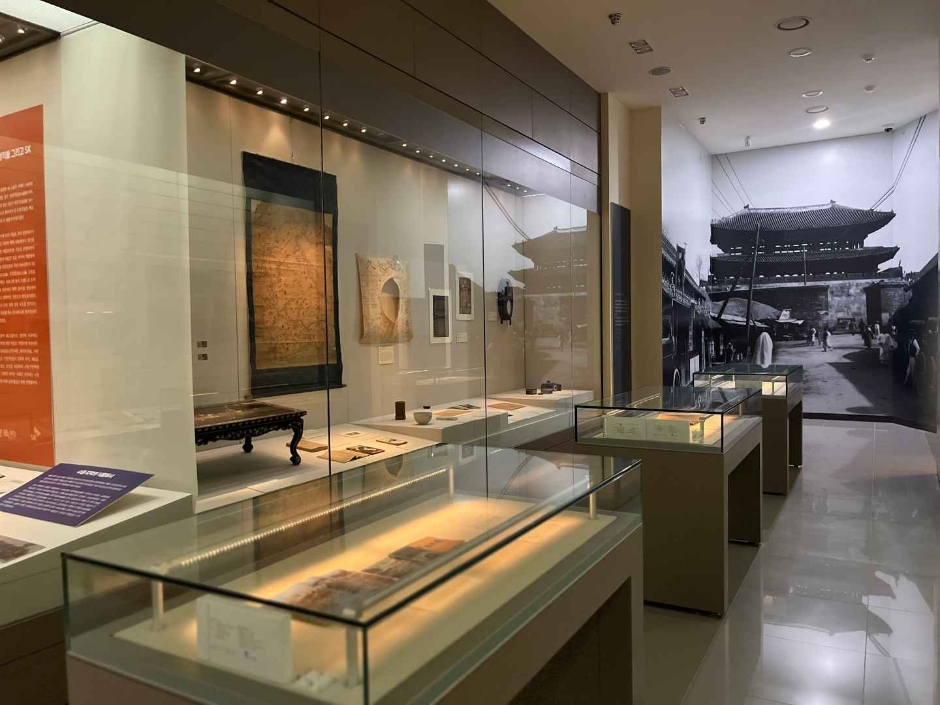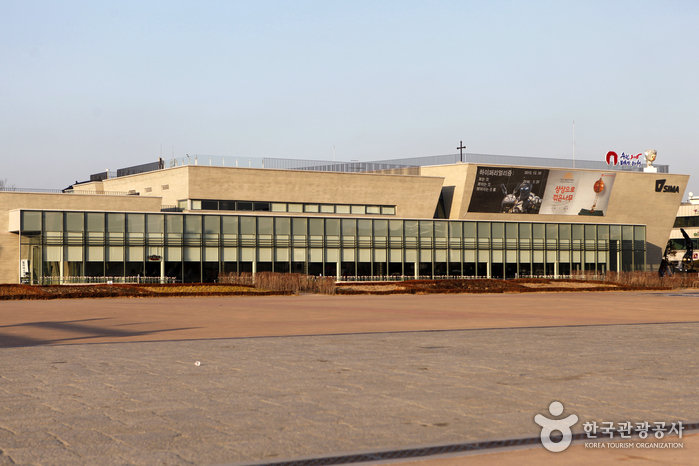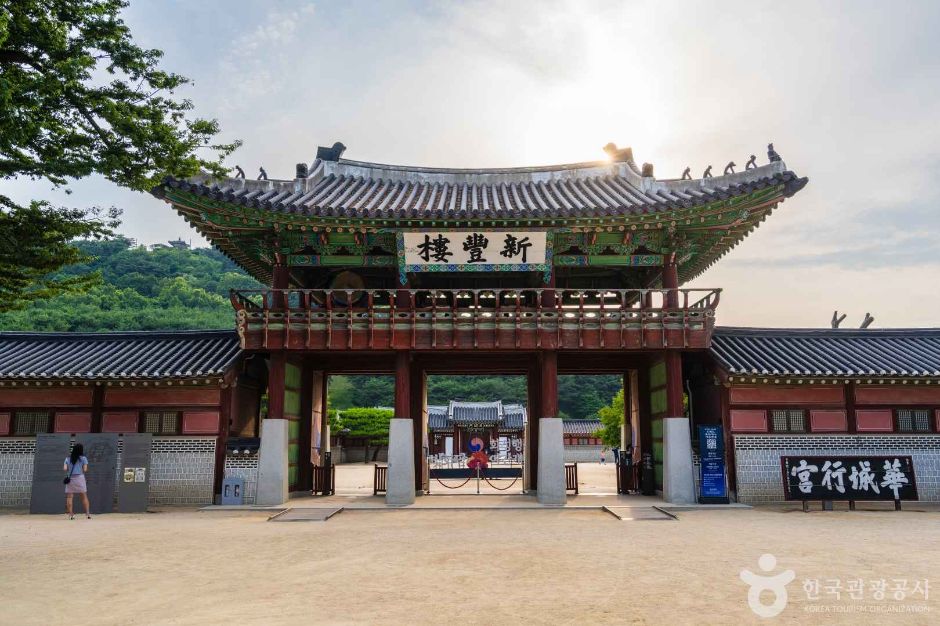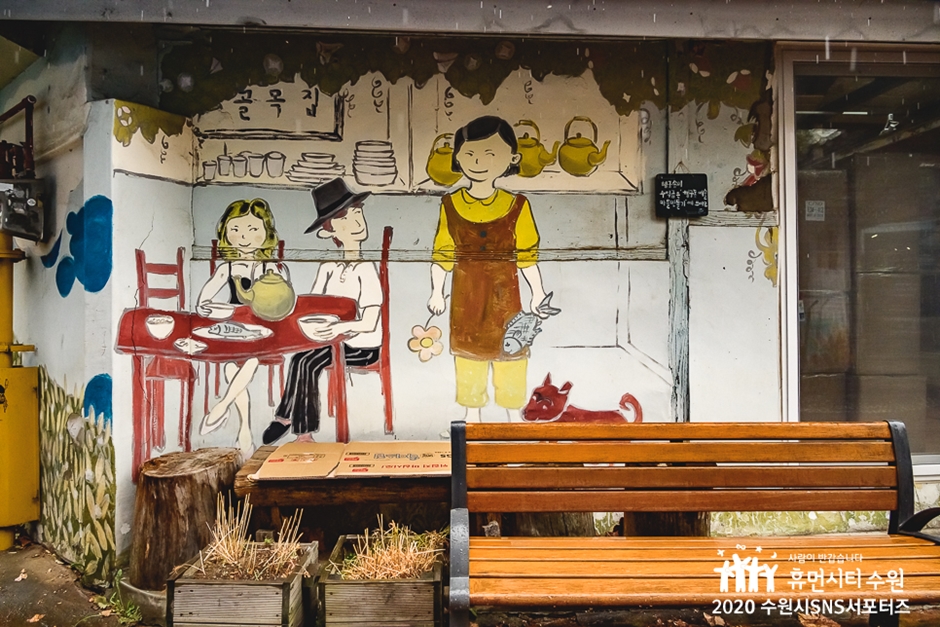Suwon Museum (수원박물관)
6.1Km 2025-05-22
265 Changnyong-daero, Yeongtong-gu, Suwon-si, Gyeonggi-do
+82-31-228-4150
Locaed in Iui-dong, Yeongtong-gu, Suwon Museum has one basement floor and two above-ground floors, spanning over an area of 6,535 ㎡. Suwon Museum consists of two main exhibition halls, Suwon Museum of History and Calligraphy Museum of Korea, showcasing approximately 48,000 relics, and a planned exhibition hall for special occasions and exhibitions.
Suwon Museum of History recreates a scene of Yeongdong Market Street during the1960s. Children can learn and get secondhand experience of what Suwon was like in the past while adult visitors can reminisce the old times.
Calligraphy Museum of Korea is the first calligraphy museum built by a local government. The museum houses Korea's significant calligraphy works. The hall features a spacious area and its display cases are designed with cutting edge technology to highlight the relics on display. Exhibited collections include geumseokmun (metal writing), beopseo (calligraphic specimen of renowned artists of the past), works of renowned calligraphers during the Joseon dynasty, eopil (the writings of Kings), seogan (letters), works of renowned contemporary calligraphers, and more. Also, a planned exhibition hall holds exhibitions with specific themes every year. In addition, the museum offers educational programs for visitors as well as large scale calligraphy events for the general public.
Olive Young - Dongtan Yeongcheon Branch [Tax Refund Shop] (올리브영 동탄영천점)
6.1Km 2024-06-26
#101, and #102, 686, Dongtansunhwan-daero, Hwaseong-si, Gyeonggi-do
-
Olive Young - Byeongjeom Station Branch [Tax Refund Shop] (올리브영 병점역점)
6.1Km 2024-06-27
2, Byeongjeom 3-ro, Hwaseong-si, Gyeonggi-do
-
Suwon Museum of Art (수원시립미술관)
6.2Km 2025-05-22
833 Jeongjo-ro, Paldal-gu, Suwon-si, Gyeonggi-do
Suwon Museum of Art is a cultural and artistic space located in the plaza of Hwaseong Haenggung Palace in Suwon. The building, which embodies the harmony of modernity and nature, includes exhibition halls, a library, classrooms, and a cafeteria. It serves as a place where the spirit of Hwaseong meets contemporary art, offering high-quality exhibitions, immersive interactive displays, and unique showcases focusing on the Suwon region.
Uniqlo - Guseong Branch [Tax Refund Shop] (유니클로 구성)
6.2Km 2024-04-19
1F, 2420, Yonggu-daero, Giheung-gu, Yongin-si, Gyeonggi-do
-
Temporary Palace at Hwaseong Fortress (Hwaseong Haenggung Palace) (화성행궁)
6.2Km 2025-05-22
825 Jeongjo-ro, Paldal-gu, Suwon-si, Gyeonggi-do
A haenggung is a temporary palace where the king and royal family retreated to during a war. Hwaseong Haenggung Palace is the largest one of these, used by the Joseon kings since the time of King Jeongjo (r. 1776-1800). In addition to being used as a shelter during war, King Jeongjo also stayed here during trips to worship at his father's tomb. The palace was the location of a splendid feast held on the 60th birthday of his mother, Hyegyeonggung Hong, and many other events, including award certificates for successful candidates of special national exams. These days, the palace serves as a venue for many traditional cultural performances and activities.
GS25 - Suwon Parkville Branch [Tax Refund Shop] (GS25수원파크빌점)
6.3Km 2024-06-26
52, Hyanggyo-ro, Paldal-gu, Suwon-si, Gyeonggi-do
-
Haenggung-dong Mural Village (행궁동 벽화마을)
6.3Km 2025-10-28
9-7 Hwaseomun-ro 72beon-gil, Paldal-gu, Suwon-si, Gyeonggi-do
Suwon’s Haenggung-dong is the name for 12 neighborhoods, including Jangan-dong and Sinpung-dong, in the Hwaseong Fortress area. It was the most bustling place in Suwon from when the Hwaseong Fortress was built 220 years ago until just a few decades ago. However, with Hwaseong Fortress being designated as a UNESCO World Heritage Site, time seems to have stopped due to strict development regulations. In the meantime, residents, civic groups, and artists came together to paint murals in effort to make the area become more alive. Due to their efforts, the region has now emerged as a tourist attraction visited by as many people as Hwaseong Fortress.
The Haenggung-dong comprises various alleys connected depending on their characteristics, including the Mural Village, Workshop Street, Suwon Chicken Street, and Jidong Market. The Mural Village is divided into six alleyways by theme, including the Haengbokha (Happy) Road, Saranghada (Love) Road, Nuneuroganeun (to Snow) Road, Cheoeumachim (First Morning) Road, Romance Road, and Dwiroganeun (Backward) Road. A photo zone has been set up in front of the mural, and not only the mural but also the walls, roof, and fence are filled with various sculptures and paintings. Many pretty workshops and cafés nearby are also interesting to look around.
◎ Travel information to meet Hallyu’s charm - TV series "Lovely Runner"
Haenggung-dong Mural Village sets the scene where Sol and Sun-jae walked to school together. It is also where the memorable scene was filmed of Sol dashingly pushing a flustered Sun-jae against the wall. As you stroll along the low stone walls adorned with murals, it’s easy to imagine the couple’s school-day moments, adding a nostalgic charm to your walk.
Banghwasuryujeong Pavilion (방화수류정(동북각루))
6.3Km 2025-05-22
44-6 Suwoncheon-ro 392beon-gil, Paldal-gu, Suwon-si, Gyeonggi-do
+82-31-228-4672
Banghwasuryujeong Pavilion, officially called Dongbukgangnu Pavilion, was built in 1794 during the construction of Suwon Hwaseong Fortress. It sits atop a hill east of Hwahongmun Gate and offers beautiful views of the surrounding scenery. For this reason, the pavilion received the nickname Banghwasuryujeong, meaning a pavilion where one can "find flowers and stroll among willow trees." The pavilion was once damaged due to flooding and reconstructed in 1848, followed by continuous recovery and preservation efforts. In 2011, the pavilion was designated as Treasure No. 1709. Banghwasuryujeong Pavilion is evaluated as one of the most original architectures in Hwaseong for its unique composition and roof design that offer a different look depending on the viewer's angle. Known to be the spot where King Jeongjo would stop by to rest on his way to Hwaseong Fortress, the pavilion offers a bird's-eye-view of Yeonmudae Post to the east and Janganmun Gate to the west with Paldalsan Mountain in the background.
Olive Young - Homeplus Byeongjeom Branch [Tax Refund Shop] (올리브영 홈플러스병점점)
6.3Km 2024-06-27
1F, 985, Gyeonggi-daero, Hwaseong-si, Gyeonggi-do
-



![Uniqlo - Guseong Branch [Tax Refund Shop] (유니클로 구성)](http://tong.visitkorea.or.kr/cms/resource/08/2889408_image2_1.jpg)


 English
English
 한국어
한국어 日本語
日本語 中文(简体)
中文(简体) Deutsch
Deutsch Français
Français Español
Español Русский
Русский